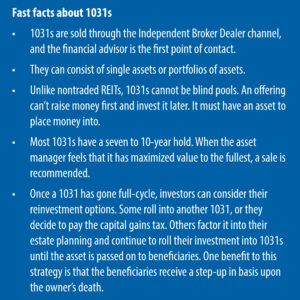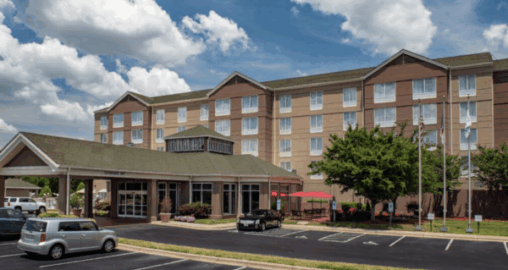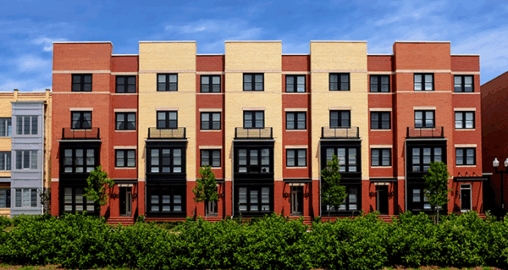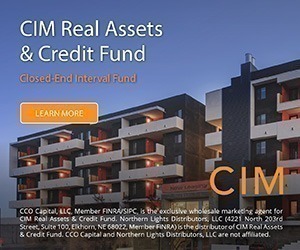Keith Lampi on Inland’s 1031 Success
October 11, 2016 | by Beth Glavosek | Blue Vault
Blue Vault recently caught up with Keith Lampi, President and Chief Operating Officer of Inland Private Capital Corporation (IPCC) to discuss the company’s long-standing success in the 1031 market. Formed in 2001, IPCC is The Inland Group’s private placement business unit.
Blue Vault: By most estimates, Inland has captured approximately 60% of the 1031 market. What do you think accounts for this market leadership?
Lampi: Inland has devoted a great deal of energy and resources to our 1031 business unit. We were one of the  first sponsors in the securitized 1031 space back in 2001, and over the past 15 years have become the ‘go-to’ provider for this type of product. A great deal of our success is attributable to our track record and reputation for bringing offerings full cycle. To date, we have completed over 40 programs and have successfully monetized more than $300M just in the past 18 months.
first sponsors in the securitized 1031 space back in 2001, and over the past 15 years have become the ‘go-to’ provider for this type of product. A great deal of our success is attributable to our track record and reputation for bringing offerings full cycle. To date, we have completed over 40 programs and have successfully monetized more than $300M just in the past 18 months.
Blue Vault: At one time, there were quite a few sponsors offering 1031 exchanges. Today, it seems that there are much fewer. What accounts for that difference?
Lampi: In 2002, the 1031 industry took off when the IRS issued guidance regarding the use of fractionalized ownership of securitized real estate as replacement property for tax-deferred exchanges. Sponsors rapidly started appearing on the scene – I think as many as 75 at one point – to take advantage of this opportunity to raise capital.
When we reached the 2008-2009 era during the economic downturn, we witnessed a ‘cleansing’ of the market. Only a handful of sponsors were left standing.
Blue Vault: Why do you think that Inland was one of the sponsors that endured in the 1031 market when most others dropped out?
Lampi: First of all, Inland has been in the real estate business for nearly 50 years and has the size, scale, platform, and long-term vision necessary for staying power. Our 1031 line of business has benefited from our strong deal flow, a research driven asset selection process, underwriting standards, and track record of performance. At the same time, after 15 years in the securitized 1031 market, we’ve demonstrated our ability to face market challenges, while becoming more nimble, innovative, and creative as we structure and bring new product to market.
In terms of upfront loads, we strive to maintain a lean cost structure so that a larger percentage of investors’ dollars go into the real estate. Today, I believe that we offer the leanest structure in the market in terms of fees and expenses.
Blue Vault: How have you continued to expand your 1031 business?
Lampi: We started with triple-net-lease retail and office, and added to our product menu. As we saw opportunities across the real estate spectrum, we introduced a variety of asset types to our platform including multifamily, student housing, medical office, and self-storage.
Blue Vault: What are the benefits for private property owners to move their sales proceeds into a securitized fractional ownership 1031 structure?
Lampi: Let’s say that an owner sells a property that yields $1 million in investable sales proceeds. He or she can execute a simple 1031 exchange by going through a local broker to find replacement property, but the owner still must negotiate the transaction, line up financing and handle day-to-day property management responsibilities. By using a securitized structure like IPCC’s, investors receive the tax benefits of a 1031 and their investment dollars are pooled with other investors, which presents an opportunity to diversify across multiple offerings and sectors. The ability to asset allocate and tailor a portfolio of fractional interests specific to an investor’s financial objectives serves as a significant risk mitigation tool. Experienced real estate professionals manage the property on the owners’ behalf, which is a benefit. There is also a cash flow component: We generally target properties where in-place cash flow from operations hovers at around 5-6%. As asset managers, we then strive to drive value through asset performance over the life of the investment.
Blue Vault: Do you remain optimistic about growth in the 1031 market?
Lampi: Absolutely. We believe strongly that big picture demographic trends make a compelling case for the future. A large number of aging Baby Boomers have been active landowners, landlords, and real estate owners during their working years. Many of them took a very active, hands-on role in managing their properties. As they have aged, many have become more interested in leaving the day-to-day aspects of property ownership to professionals. At the same time, there’s a strong desire to not see their net worth eroded through tax liabilities. A securitized 1031 exchange is a great solution for an active property owner seeking a more passive ownership structure as a lifestyle and tax planning option.
We estimate that out of the entire 1031 market today, the securitized fractional ownership segment is less than 10% (other transactions are usually individually brokered.) I am very optimistic about our industry’s near term growth and believe that we’ve only scratched the surface of this market’s potential.
About IPCC
The programs sponsored by IPCC provide accredited investors an opportunity to invest in institutional-quality properties as fractional owners. As of June 30, 2016, IPCC had sponsored 190 private placement programs that include 487 properties, comprised of over 29 million square feet of gross leasable area, and including 8,515 residential units, for an aggregate offering price of more than $5.9 billion.












